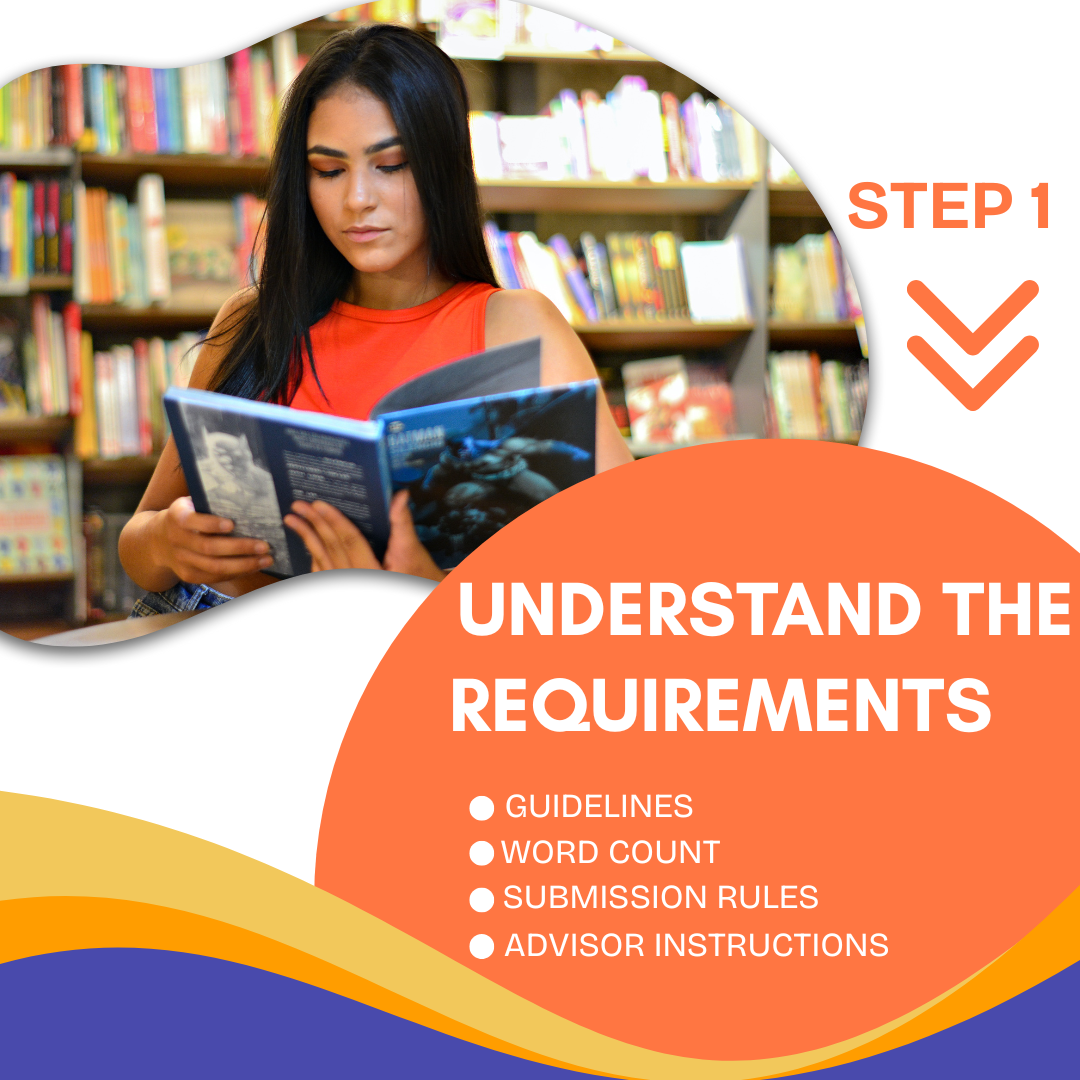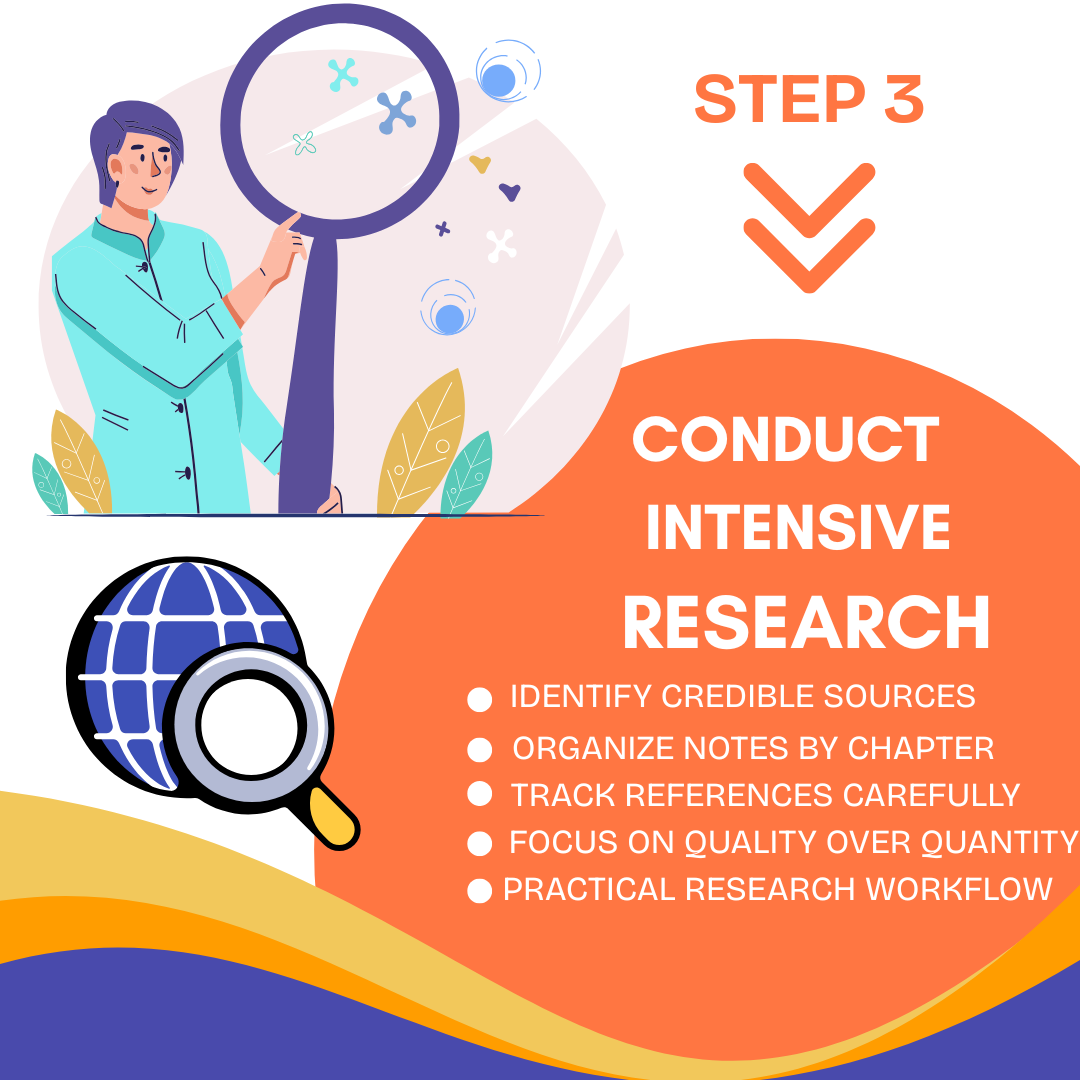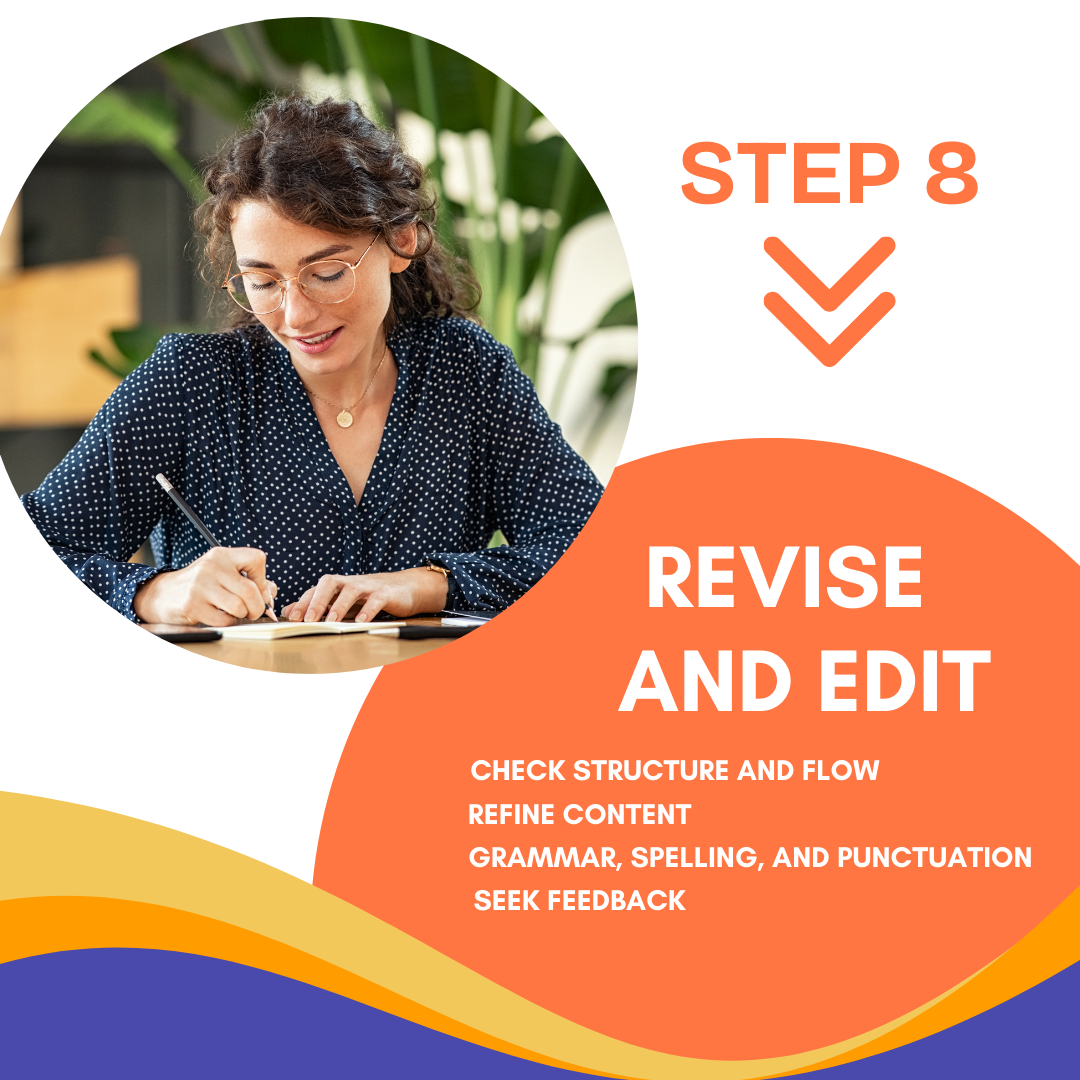Introduction
How to write a 10000 word dissertation in 2 weeks: Writing a dissertation is one of the most important milestones in an academic journey. But when faced with tight deadlines, completing a 10,000-word dissertation in just two weeks can feel daunting. The good news? With strategic planning, effective research, and disciplined writing, this challenge is entirely achievable.
While many students seek professional dissertation consulting for guidance, you can successfully complete your dissertation independently by following a structured roadmap. This guide breaks down the process into actionable steps, day-wise plans, and practical tips to help you meet your deadline without compromising quality.
Steps to Writing a 10,000-Word Dissertation in Two Weeks
Here’s a step-by-step strategy to manage time, research, and writing effectively:

I. Understand the Requirements

Before you start writing your dissertation, taking the time to fully understand the requirements is crucial. Many students waste hours writing content that doesn’t align with their university’s guidelines, which can lead to unnecessary revisions or even lower grades. By clarifying the requirements upfront, you set a solid foundation for a smooth writing process.
Here’s a detailed breakdown of what to check:
| Requirement | What to Check | Why It Matters |
|---|---|---|
| Guidelines | Chapter structure, formatting style (font, size, margins), referencing style (APA, Harvard, MLA, etc.) | Ensures your dissertation looks professional and meets academic standards. |
| Word count | Total word limit and section-wise allocation | Helps you plan each chapter efficiently without exceeding limits or falling short. |
| Submission rules | Deadlines, file format (PDF, Word), plagiarism check requirements | Prevents last-minute surprises and ensures your dissertation is accepted. |
| Advisor instructions | Specific research focus, expectations, preferred structure | Aligns your work with your advisor’s expectations, increasing your chances of approval. |
Practical Tips for Understanding Requirements
- Read the official handbook: Most universities provide a dissertation handbook or guide. Make notes on critical points like formatting, citation style, and chapter structure.
- Clarify doubts with your advisor: If anything is unclear—such as word distribution or methodology expectations—ask your supervisor early.
- Check past dissertations: Reviewing previous students’ work can give insight into structure, tone, and expectations.
- Create a checklist: Summarize all requirements in a single checklist. This ensures nothing is missed while writing or editing.
Example: How Misunderstanding Requirements Can Backfire
Suppose your dissertation requires a 2,500-word Literature Review, but you write 4,000 words because you misunderstood the guideline. You may need to cut down content later, wasting hours and potentially losing the flow of your argument.
By clarifying requirements first, you save time, reduce stress, and maintain a consistent flow across chapters.
Key Takeaway: Understanding the dissertation requirements thoroughly is the first and most important step toward completing your dissertation efficiently. A clear brief acts as a roadmap, helping you stay focused and avoid unnecessary revisions.
II. Create a Detailed Plan

Completing a 10,000-word dissertation in just two weeks is challenging, but a well-structured plan can make the task manageable. Planning helps you stay organized, reduces stress, and ensures that you meet daily word targets without sacrificing quality.
A detailed plan should break your dissertation into chapters, sub-sections, and daily targets. It should also balance writing sessions, research periods, and short breaks to maintain focus and avoid burnout.
Key Components of Your Plan
- Dedicated Writing Blocks
- Set aside uninterrupted blocks of time for writing, ideally 2–4 hours per session.
- Focus on one chapter or section at a time.
- Use techniques like the Pomodoro Method (25 minutes writing + 5 minutes break) to maintain concentration.
- Research Periods
- Allocate specific time slots for collecting data, reading papers, or reviewing literature.
- Avoid mixing research and writing in the same session to stay efficient.
- Breaks to Maintain Focus
- Short breaks prevent mental fatigue and improve productivity.
- Use breaks for stretching, hydration, or a quick walk.
Example of a 2-Week Writing Schedule
| Day | Task | Word Target | Notes |
|---|---|---|---|
| 1 | Finalize topic & collect research sources | 0 | Focus on identifying credible journals, books, and databases. |
| 2 | Write Introduction | 800–1000 | Introduce your research question, objectives, and background. |
| 3–4 | Literature Review | 2500 | Summarize, analyze, and identify gaps in existing research. |
| 5 | Methodology | 1500 | Describe your research design, approach, and tools. |
| 6–7 | Collect & organize data | – | Gather primary/secondary data; organize tables, charts, and references. |
| 8–9 | Results/Findings | 2000 | Present your data clearly using tables, figures, and explanations. |
| 10 | Discussion (start) | 1000 | Interpret findings, compare with literature, highlight key insights. |
| 11 | Discussion (finish) | 1000 | Continue analysis and discuss implications. |
| 12 | Conclusion & Abstract | 600–800 | Summarize main points, limitations, and future research suggestions. |
| 13 | First full draft editing | – | Revise for flow, coherence, grammar, and clarity. |
| 14 | Proofread, finalize formatting, references | – | Final checks, reference consistency, formatting, and submission readiness. |
Pro Tips for Planning
- Adjust the schedule based on your speed: Some sections may take longer depending on the complexity of your research.
- Set realistic daily word targets: Avoid aiming for 3,000+ words in a day—it can lead to burnout.
- Prioritize difficult sections first: If certain chapters are more challenging (e.g., Discussion or Methodology), tackle them when your focus is highest.
- Use a progress tracker: A simple table, spreadsheet, or planner can help you track completed sections and remaining tasks.
- Stay flexible: If you fall behind, redistribute tasks across remaining days rather than panicking.
Why Planning Matters
A clear, day-wise plan transforms a daunting 10,000-word dissertation into manageable chunks. It reduces procrastination, ensures balanced effort across sections, and allows for proper editing before submission. In short, planning is your roadmap to finishing on time without stress.
III. Conduct Intensive Research

Research is the backbone of any dissertation. Efficient and targeted research not only strengthens your arguments but also saves you significant time during the writing process. In a tight two-week timeframe, it’s crucial to focus on quality over quantity and have a clear strategy.
1. Identify Credible Sources
Start by gathering information from reliable and reputable sources, such as:
- Academic databases: Google Scholar, JSTOR, PubMed, Scopus
- University libraries: Digital or physical resources for textbooks, dissertations, and journals
- Reputable websites: Government or educational websites ending in .edu or .gov
- Peer-reviewed journals: Ensure the studies are validated by experts in the field
Tip: Avoid using random blogs or Wikipedia as primary sources—they are not considered credible for academic work.
2. Organize Notes by Chapter
To save time later, organize your research notes in a structured manner:
| Chapter | Notes & Ideas | References |
|---|---|---|
| Introduction | Key background, research problem, objectives | Author, Year |
| Literature Review | Summaries of studies, methodologies, gaps | Author, Year |
| Methodology | Techniques, data collection ideas | Author, Year |
| Discussion/Results | Supporting evidence for arguments | Author, Year |
Pro Tip: Use digital tools like Notion, Evernote, or Microsoft OneNote to categorize notes by chapters, themes, or keywords.
3. Track References Carefully
Managing references properly is essential for saving time during citation and avoiding plagiarism.
- Use reference management tools like Zotero, Mendeley, or EndNote.
- Record all bibliographic details: author, title, journal, year, DOI, page numbers.
- Tag references by chapter or topic to easily retrieve them during writing.
Example: If you are writing the Literature Review on “Digital Marketing Trends,” create a tag called “Digital Marketing” and store all relevant studies under it for quick access.
4. Focus on Quality Over Quantity
With only two weeks, don’t get lost in endless research. Aim for 20–30 high-quality sources that:
- Directly support your research objectives
- Are recent (preferably last 5–10 years)
- Include a mix of theoretical and empirical studies
Tip: Summarize each source in a few sentences, highlighting the key points that are relevant to your dissertation. This saves time when you start writing.
5. Practical Research Workflow
Here’s a simple workflow to make research efficient in a short time:
- Define your keywords: Identify 5–10 main keywords related to your topic.
- Search databases systematically: Use filters for year, subject, and peer-reviewed content.
- Screen abstracts first: Only download articles that are highly relevant.
- Take structured notes: Include direct quotes, page numbers, and your commentary.
- Organize sources by chapter: So you can reference them directly while writing.
Key Takeaway: Efficient research is not about reading everything; it’s about strategically selecting high-quality sources, organizing your notes, and managing references effectively. This approach will give you a strong foundation and make the writing process much faster and smoother.
IV. Start with the Literature Review

The Literature Review is one of the most important sections of your dissertation. It sets the foundation for your research by demonstrating your understanding of existing studies and highlighting the gap your research will address. Starting with the Literature Review is especially helpful when working under tight deadlines, as it provides substantial content that can inform other chapters like Introduction, Methodology, and Discussion.
1. Understand the Purpose
The Literature Review serves three key purposes:
- Summarize existing research – Present key studies, theories, and methodologies relevant to your topic.
- Critically analyze findings – Identify strengths, weaknesses, and limitations in existing studies.
- Highlight research gaps – Show where your study will contribute new insights or address unresolved questions.
2. Organize Your Review Logically
A well-structured Literature Review is easier to write and read. Consider organizing it:
- Thematically: Group studies by theme, concept, or variable.
- Chronologically: Show how research has evolved over time.
- Methodologically: Compare approaches, techniques, and study designs.
Example Structure:
| Section | Content |
|---|---|
| Theme 1: Theoretical Background | Summarize major theories and foundational studies |
| Theme 2: Empirical Studies | Discuss relevant experiments, surveys, or case studies |
| Theme 3: Gaps in Research | Highlight limitations, inconsistencies, and unanswered questions |
| Relevance to Current Study | Explain how your dissertation addresses these gaps |
3. Write Effectively Under a Tight Schedule
- Use your organized notes from research (Section III) to speed up writing.
- Summarize key points rather than rewriting entire studies. Focus on relevance to your topic.
- Critically evaluate sources: Don’t just list studies—analyze their strengths, weaknesses, and implications.
Pro Tip: Starting with the Literature Review builds momentum because it provides you with ready-made content and helps shape other sections, like your methodology and discussion.
4. Include Citations Properly
- Use consistent citation style (APA, Harvard, etc.) as required by your institution.
- Keep track of page numbers for direct quotes.
- Consider using reference management tools like Zotero or Mendeley to insert citations while writing.
5. Example of a Paragraph in Literature Review
“Recent studies on digital marketing trends indicate that social media engagement significantly influences consumer behavior (Smith, 2020; Lee, 2019). However, most studies focus on large enterprises, leaving a gap in understanding small business strategies. This dissertation aims to explore how small businesses leverage social media to enhance customer loyalty, addressing the existing gap in literature.”
Notice how this paragraph:
- Summarizes existing research
- Identifies a gap
- Connects directly to the current study
Key Takeaway:
The Literature Review is more than a summary of studies—it is your opportunity to critically evaluate existing research, identify gaps, and position your dissertation as a valuable contribution. Starting with this section sets a strong foundation and helps streamline the rest of your writing process.
V. Develop a Solid Outline

After completing your Literature Review, the next step is to create a chapter-wise outline. A solid outline acts as a roadmap, ensuring your dissertation flows logically and covers all key points, while making writing faster and more organized.
Why an Outline Matters
- Provides structure and clarity
- Organizes ideas logically
- Helps track progress and identify gaps
- Saves time during writing and editing
Components of a 10,000-Word Dissertation
| Chapter | Word Count | Key Content |
|---|---|---|
| Introduction | 800–1000 | Background, problem, objectives, research questions |
| Literature Review | 2500 | Summary of studies, theories, research gaps |
| Methodology | 1500 | Design, sampling, data collection, analysis |
| Results/Findings | 2000 | Data presentation using tables and charts |
| Discussion | 2000 | Interpretation, comparison with literature |
| Conclusion | 500–800 | Summary, limitations, recommendations |
| References | – | Properly cited sources |
Tips for Creating Your Outline
- Break chapters into sub-sections (e.g., Methodology: design, data collection, analysis)
- Include bullet points of key arguments or evidence for faster writing
- Use flowcharts or mind maps to visualize chapter connections
- Be flexible: adjust as needed while writing
Key Takeaway:
A clear outline transforms a large dissertation into manageable sections, improving both clarity and efficiency. Think of it as your blueprint—writing becomes faster and more focused.
VI. Write Efficiently

With a solid outline in place, it’s time to start writing. Efficiency is key, especially when working under a tight two-week deadline.
Tips for Writing Quickly and Effectively
- Dedicated sessions: Set aside distraction-free blocks (2–4 hours) to focus on one chapter at a time.
- Content first, perfection later: Don’t get stuck editing as you write—refine during revision.
- Simple language: Clear, concise sentences speed up writing and improve readability.
- Word targets: Aim for 1,000–1,500 words per session to maintain steady progress.
- Pomodoro technique: 25 minutes writing + 5 minutes break to boost focus.
Additional Strategies
- Start with easier chapters (Methodology or Results) to build confidence.
- Use your notes and outline directly to reduce time spent thinking about structure.
- Copy key quotes or references into the relevant sections for faster integration.
Key Takeaway:
Efficient writing is about focus, consistency, and following your roadmap. By prioritizing content first and refining later, you can steadily complete your dissertation without getting overwhelmed.
VII. Break It Down

Completing a 10,000-word dissertation can feel overwhelming. The key is to divide the work into manageable daily targets.
Daily Word Goals
- Aim for 1,500 words per day to stay on track
- Focus on one chapter or sub-section at a time
- Adjust targets based on difficulty and time availability
Mini-Milestones to Stay Motivated
| Milestone | Reward / Motivation |
|---|---|
| Complete Introduction | Short break or treat yourself |
| Finish Literature Review | Watch an episode of your favorite show |
| Complete Methodology | Go for a walk or coffee break |
| Submit final draft for proofreading | Celebrate with friends or family |
Tips for Breaking Down Work
- Prioritize difficult sections first when your energy is highest
- Use timers or Pomodoro sessions to stay focused on daily tasks
- Track your progress visually—checklists or spreadsheets work well
- Stay flexible: redistribute work if you fall behind
Key Takeaway:
Breaking your dissertation into smaller, manageable chunks makes the process less stressful and keeps you motivated. Daily targets and mini-milestones create momentum and help ensure timely completion.
VIII. Revise and Edit

Revision and editing are essential to transform your first draft into a polished dissertation. This step ensures clarity, coherence, and academic quality.
Steps for Effective Revision
- Check structure and flow
- Ensure each chapter logically connects to the next
- Confirm arguments align with your research objectives
- Refine content
- Clarify complex sentences
- Remove repetition or irrelevant information
- Strengthen arguments with supporting evidence
- Grammar, spelling, and punctuation
- Use tools like Grammarly or MS Word spell check
- Manually proofread for errors that tools might miss
- Seek feedback
- Share your draft with a peer, mentor, or advisor
- Incorporate constructive suggestions to improve quality
Pro Tips
- Edit in rounds: first focus on structure, then language, then formatting
- Avoid editing while writing; focus on content first, polish later
- Take short breaks between revision sessions to maintain a fresh perspective
Key Takeaway:
Revision is where your dissertation becomes clear, coherent, and academically strong. Systematic editing and feedback ensure your work meets professional standards and is ready for submission.
IX. Proofread Thoroughly

Proofreading is the final critical step to ensure your dissertation is error-free, professional, and ready for submission. Even small mistakes can affect the readability and credibility of your work.
Steps for Effective Proofreading
- Check formatting and layout
- Ensure consistent font, margins, headings, and spacing
- Verify that tables, figures, and captions are correctly formatted
- Review citations and references
- Ensure all sources are cited correctly
- Double-check reference list formatting (APA, Harvard, etc.)
- Spot grammar and spelling errors
- Use tools like Grammarly or MS Word spell check
- Read manually to catch subtle mistakes
- Read aloud
- Helps identify awkward phrasing, missing words, or unclear sentences
Pro Tips
- Proofread in stages: first for structure, then language, then minor errors
- Take a break before proofreading to see your work with fresh eyes
- Consider asking a peer or professional editor for a final review
Key Takeaway:
Thorough proofreading ensures your dissertation is polished, professional, and submission-ready. Attention to detail here can significantly improve your overall grade and presentation.
X. Stay Focused and Committed

Completing a 10,000-word dissertation in just two weeks requires discipline, focus, and consistency. Staying committed ensures steady progress and reduces stress.
Tips to Maintain Focus
- Eliminate distractions
- Turn off social media notifications
- Work in a quiet, organized space
- Stick to your schedule
- Follow your daily writing and research targets
- Use timers or the Pomodoro technique for concentrated sessions
- Maintain a positive mindset
- Celebrate small milestones to stay motivated
- Avoid perfectionism; prioritize progress over flawless drafts
- Take care of yourself
- Get enough sleep, eat well, and take short breaks
- Physical and mental well-being improves productivity
Pro Tips
- Keep a visual tracker of your progress (checklists or charts)
- Focus on one section at a time to avoid feeling overwhelmed
- Remember: Consistency beats intensity—regular effort yields results
Key Takeaway:
Discipline, focus, and smart time management are crucial. By staying committed and motivated, you can complete your dissertation on time without compromising quality.
Common Mistakes to Avoid ❌
Even with careful planning, students often make recurring errors that can slow down the dissertation process. Here’s what we suggest you avoid:
- Procrastination ⏳
Waiting for inspiration or “more time” can derail your schedule. Stick to your daily word targets and follow your two-week plan strictly. - Ignoring Guidelines 📋
Not following formatting, citation, or word count requirements can lead to unnecessary revisions. Keep a checklist handy. - Over-Researching 🔍
Spending too much time gathering information can reduce writing time. Focus on high-quality, relevant sources. - Copying Without Paraphrasing ✍️
Always write in your own words. Direct copying can lead to plagiarism and hurt your grade. - Neglecting Drafts 📝
Writing one draft and submitting it without editing can leave logical gaps and grammatical errors. Plan time for revisions. - Ignoring Feedback 💬
Feedback from your supervisor or peers is valuable. Use it to strengthen your dissertation. - Overcomplicating Language 🗣️
Avoid unnecessarily complex sentences. Clear, concise writing improves readability and keeps your ideas focused.
Recommended Tools and Resources 🛠️
We recommend using the right tools to save time, improve quality, and stay organized while completing your dissertation:
Writing and Editing
- Grammarly – Check grammar, spelling, and style.
- Hemingway App – Simplifies complex sentences for better readability.
- Microsoft Word Track Changes – Useful for revising drafts.
Research and Reference Management
- Zotero / Mendeley / EndNote – Organize references and generate citations automatically.
- Google Scholar / JSTOR / Scopus – Access peer-reviewed journals and research papers.
- ProjectsDeal.co.uk – We provide examples, tips, and guidance for structuring your dissertation. We will help you throughout your dissertation journey, offering ideas, structure, and inspiration while ensuring your work remains original. ✅
Planning and Productivity
- Trello / Notion / Evernote – Keep notes, sources, and daily targets organized.
- Pomodoro Timer Apps – Boost focus during writing sessions.
Data Analysis (if applicable)
- SPSS / Excel / R – Analyze and visualize your research data efficiently.
Visual Aids
- Canva / Lucidchart – Create clear diagrams, charts, and tables for methodology or results chapters.
❓ FAQ – 10,000-Word Dissertation
1. How many hours does it take to write a 10,000-word dissertation? ⏱️
On average, it may take 50–70 focused hours over 2 weeks, including research, drafting, and editing. Using guidance from ProjectsDeal.co.uk can make the process faster and more organized.
2. How to structure a 10,000-word dissertation? 🏗️
A typical structure includes:
- Introduction: 800–1,000 words
- Literature Review: 2,500 words
- Methodology: 1,500 words
- Results/Findings: 2,000 words
- Discussion: 2,000 words
- Conclusion: 500–800 words
- References: Properly cited sources
Check our detailed blog for a full breakdown: 10,000-Words Dissertation Structure
3. Can I write 10,000 words in 10 days? 💪
Yes! Break it into daily word targets (~1,000–1,500 words/day), stay disciplined, and follow a structured plan. Tools and guidance from ProjectsDeal.co.uk help you stay on track.
4. How long should a chapter be in a 10,000-word dissertation? 📖
Chapter lengths can vary:
- Introduction: ~800–1,000 words
- Literature Review: ~2,500 words
- Methodology: ~1,500 words
- Results/Findings: ~2,000 words
- Discussion: ~2,000 words
- Conclusion: ~500–800 words
This ensures each chapter is balanced and concise.
5. How do I choose a dissertation topic quickly? 🎯
Pick a topic that is relevant, specific, and researchable. Consider your interests, available resources, and guidance from ProjectsDeal.co.uk for topic ideas.
6. How can I manage references efficiently? 📚
Use tools like Zotero, Mendeley, or EndNote to organize your references. Tag them by chapter or theme so you can insert citations quickly while writing.
7. How do I handle writer’s block? 🧠
Take short breaks, switch chapters, or work on sections that feel easier. Using outlines, bullet points, and tips from ProjectsDeal.co.uk can help you regain momentum.
8. Can I include tables and figures in a 10,000-word dissertation? 📊
Absolutely! Visuals help present data clearly. Ensure each table or figure is labelled, referenced, and explained in the text.
9. How do I ensure my dissertation is plagiarism-free? ✅
Always write in your own words, cite sources properly, and use plagiarism checkers. Guidance from ProjectsDeal.co.uk helps you maintain originality while following academic standards.
10. How do I stay motivated while writing under a tight deadline? 🔥
Set mini-milestones, reward yourself after completing sections, track progress visually, and remember that guidance from ProjectsDeal.co.uk is there to support you throughout the journey.
Conclusion 🎓
Writing a 10,000-word dissertation in a short period may seem challenging, but it is entirely possible with proper planning and organization. By understanding the requirements, creating a detailed plan, conducting intensive research, writing efficiently, and following a structured approach, you can complete your dissertation within the given timeframe.
For additional guidance and support throughout your dissertation journey, you can rely on ProjectsDeal.co.uk. We provide examples, tips, and step-by-step guidance to help you stay on track. You can also reach us directly via
WhatsApp: +44-7447-882377 for personalized assistance.
For more insights on dissertation structure, check out our detailed blog post here: 10,000-Words Dissertation Structure.
We’re proud to have been recognized for our efforts—read about our recent accolade here: ProjectsDeal.co.uk Voted Best.